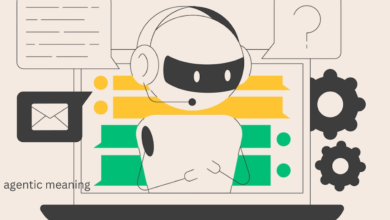How to Convert VHS to Digital: Preserve Your Memories for the Future

Converting VHS to Digital is a simple yet valuable way to preserve your old memories. If you have VHS tapes sitting around that contain family videos, weddings, or other important moments, you’re not alone! Many people have VHS tapes filled with special memories that are at risk of being lost forever due to the fragility of the tapes. Thankfully, with just a few steps, you can easily convert VHS to digital and keep those memories safe for generations.
In this blog post, we’ll guide you through the process of converting VHS to digital, so you can save your favorite moments with ease. Whether you want to convert VHS to digital for personal use or to share with friends and family, we’ll explain everything you need to know to get started and enjoy your videos on modern devices.
Why Converting VHS to Digital Is Essential for Preserving Your Memories
Many of us have old VHS tapes packed with memories, but VHS tapes can get damaged over time. Converting VHS to digital can save these memories forever. The digital files are easier to store, and you don’t have to worry about them getting ruined. When you convert VHS tapes, you also get the chance to share those memories with others more easily.
You might have family videos or old recordings that are fading. When you change them into a digital format, you keep the quality of the video intact. With the right equipment, you can even improve the quality of the video during conversion. So, converting your VHS to digital isn’t just about saving space—it’s about making sure your memories last.
The good thing is, converting VHS to digital is not as hard as it sounds. You don’t have to be an expert to do it! With a few tools and a little guidance, you can preserve those tapes yourself. This process helps you keep your memories safe for future generations. Now, let’s look at how you can start converting your VHS tapes today.
Step-by-Step Guide: How to Convert VHS to Digital Like a Pro
Converting VHS to digital might sound difficult, but it’s actually quite simple. First, you need a VHS player and a device to capture the video. You’ll also need a computer where the digital files can be stored. Here is a quick guide to help you:
- Gather your tools: You will need a VHS player, a capture device (such as a USB video capture device), and a computer with video editing software.
- Connect the VHS player to the capture device: Use cables to link the VHS player to the capture device. Then, connect the capture device to your computer.
- Install the necessary software: The capture device usually comes with software to help you record the video from the VHS tape.
- Start the conversion: Play the VHS tape while the software records it. You’ll see the video appear on your computer screen.
- Save the file: Once the video is captured, save it as a digital file. You can save it as MP4, AVI, or another format that works for you.
By following these simple steps, you can convert VHS to digital at home. This method works well for anyone who wants to keep their tapes safe without spending too much money on professional services.
The Best Tools for VHS to Digital Conversion: What You Need to Know
When converting VHS to digital, choosing the right tools is very important. The tools you use can affect the quality of the conversion and how easy it is to complete. Here are some of the best tools you’ll need to get started:
- VHS Player: You need a working VHS player. If your player is old or broken, it’s best to find a replacement to ensure smooth playback.
- USB Video Capture Device: This is the most common way to connect your VHS player to a computer. It captures the video and sends it to your computer.
- Video Editing Software: Software like iMovie or Windows Movie Maker helps you trim and improve the video after conversion. You can remove unwanted parts and enhance the video quality.
- Computer: You’ll need a computer to store the digital files and edit them as needed.
These tools work together to make the conversion process easy and affordable. Whether you’re doing it yourself or using a service, having the right tools can make a big difference in the final result.
How to Choose the Right Method for Converting VHS to Digital

When deciding how to convert VHS to digital, you have two main options: doing it yourself or hiring a professional service. Each option has its pros and cons. Let’s explore both so you can make an informed choice.
DIY Conversion:
- Cheaper option: You’ll spend a little money on tools, but it’s a one-time cost.
- Convenient: You can convert your tapes whenever you want.
- Personal control: You have full control over the quality and editing.
Professional Services:
- No work for you: You just drop off your tapes and pick them up as digital files.
- Higher cost: Professional services tend to be more expensive.
- Quality guarantee: Many services offer high-quality conversions with no risk of technical issues.
Both methods are great for different reasons, but if you want to save money and have some free time, doing it yourself could be a good choice. However, if you’re not confident with technology, a professional service might be the best option.
How to Fix Common Problems While Converting VHS to Digital
While converting VHS to digital, you may face some problems. Here are a few common issues and how to fix them:
- Poor video quality: This can happen when the VHS tape is old or damaged. You can improve the quality by using good editing software to adjust brightness, contrast, and colors.
- No audio: If there’s no sound during the conversion, check the connections between the VHS player and capture device. Make sure everything is connected properly.
- Interrupted video: Sometimes, the video might freeze or get choppy. This can happen due to technical issues. Restart your computer, and try the conversion again.
By following these steps, you can handle most common problems and make sure your VHS to digital conversion goes smoothly.
What You Should Do After Converting VHS to Digital: Storing and Sharing Your Files
Once your VHS to digital conversion is complete, you’ll want to make sure the files are safe and easy to access. Here are some ways to store and share your files:
- Back it up: Always keep a backup of your digital files. Use an external hard drive or cloud storage to keep copies safe.
- Organize your files: Create folders for each VHS tape, and label them by date or event so you can find them easily later.
- Share with family: You can upload your digital files to social media or share them through email or file-sharing services like Google Drive.
By storing and sharing your files, you can make sure your memories are accessible to anyone who wants to enjoy them. Plus, it’s easier than ever to share them with friends and family around the world!
Understanding the Costs of Converting VHS to Digital: Is It Worth It?

When deciding to convert VHS to digital, it’s important to consider the cost. While doing it yourself can be affordable, there are also professional services that offer conversions. Here’s a breakdown of both options to help you decide if the cost is worth it.
DIY Conversion:
- Upfront cost: You’ll need to buy a VHS player (if you don’t have one) and a video capture device. The price for these items varies but is typically a one-time cost of around $20-$50.
- Software: Many video editing programs are free, but if you want premium features, you may have to pay for a program like Adobe Premiere or Final Cut Pro.
- Time commitment: The main cost of DIY conversion is your time. You will need to set aside hours to connect everything and perform the conversion.
Professional Services:
- Higher costs: Professional services typically charge per tape, ranging from $15 to $30 per VHS tape. Depending on the number of tapes you have, the cost can add up quickly.
- No effort required: The main benefit of professional services is that they handle everything for you. You drop off your tapes and pick up the digital copies later.
While the DIY method saves money, the professional service could be worth it if you’re looking for convenience and the assurance of high-quality results. You can choose the option that best suits your budget and needs.
Conclusion
Converting VHS to digital is a great way to save your old memories and enjoy them on modern devices. Whether you choose to do it yourself or hire a professional service, it’s important to preserve your tapes before they get damaged. The process is simple, and with the right tools, anyone can do it! Don’t let your old videos fade away—convert them to digital and keep them safe for years to come.
Remember, converting VHS to digital doesn’t have to be expensive or time-consuming. You can easily convert them at home with the right equipment, or if you prefer, you can leave it to the experts. Either way, you’ll have your cherished memories in a format that lasts forever. So, get started and preserve your special moments today!
FAQs
Q: What equipment do I need to convert VHS to digital?
A: To convert VHS to digital, you’ll need a VHS player, a USB video capture device, and a computer with video editing software.
Q: Can I convert VHS to digital myself?
A: Yes, you can! With the right tools and a little time, converting VHS to digital is easy and affordable to do at home.
Q: How long does it take to convert one VHS tape?
A: It usually takes the same amount of time as the length of the VHS tape. For example, a two-hour tape will take about two hours to convert.
Q: Should I hire a professional service for VHS to digital conversion?
A: If you want a quick and hassle-free experience, hiring a professional service can be a good choice. However, it can be more expensive than doing it yourself.
Q: Is it necessary to back up my digital files after converting VHS?
A: Yes, always back up your digital files. Use an external hard drive or cloud storage to keep them safe from accidental loss.




